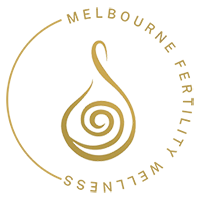Endometriosis, a condition where the endometrium grows outside the uterus, primarily affects the pelvic lining, ovaries, and fallopian tubes, causing significant discomfort. The most pronounced symptom is intense pelvic pain during menstruation, far exceeding normal menstrual cramps, along with pain during intercourse, urination, bowel movements, heavy menstrual bleeding, gastrointestinal issues, bloating, and fatigue. Addressing these symptoms, particularly in the absence of a formal treatment plan, is crucial.
Natural home remedies include heat therapy to relax pelvic muscles and reduce pain, womb and abdominal massages using specialized oils to alleviate pelvic and bowel discomfort, and castor oil packs used before menstrual flow for managing excess tissue build-up. Turmeric, known for its anti-inflammatory properties, can be taken in capsules or as a “Golden Drink.” Adopting an anti-inflammatory diet, avoiding dairy, processed sugars, caffeine, alcohol, and soy, and increasing intake of green leafy vegetables, fruits, and anti-inflammatory foods is recommended.
Yoga, specifically designed for fertility, helps in managing chronic pelvic pain associated with endometriosis. Herbal teas like Moon Time Tea and Ginger Tea offer relief from nausea and menstrual pain. The Faja method, involving womb wrapping, and Yoni steaming, a gentle reproductive health practice, are also beneficial. Emphasizing pelvic floor integrity and mindfulness meditation, such as yoga nidra, can reduce anxiety, stress, and pain associated with the condition.
Endometriosis, a condition prevalent among women of reproductive age, occurs when the endometrium, the tissue lining the uterus, grows outside the uterus. This often affects the pelvic lining, ovaries, and fallopian tubes, and can, in severe cases, spread beyond the reproductive system, causing significant discomfort.
One of the most notable symptoms of endometriosis is intense pelvic pain, particularly during menstruation. This pain surpasses the usual menstrual cramps and can be quite challenging to manage. Other symptoms include severe pain during intercourse, painful sensations during urination or bowel movements, unusually heavy bleeding during menstrual periods, along with gastrointestinal issues like diarrhea and constipation, bloating, and general fatigue. Addressing these symptoms is critical for women who are navigating their way through this condition, especially in the absence of a definitive treatment plan.
To offer some relief, here are several natural home remedies:
Other symptoms include:
- pain during intercourse
- pain with urination or bowel movements
- excessive heavy bleeding during periods
- diarrhea
- constipation
- bloating
- fatigue
- Heat Therapy: Heat Therapy is a traditional, non-invasive method highly effective in providing relief from the symptoms of endometriosis. By applying heat, it helps to relax the muscles in the pelvic area, thus easing menstrual cramps and reducing pelvic pain. This can be particularly beneficial during the menstrual cycle when symptoms are at their peak. The warmth from heat sources like warm baths, hot water bottles, or heating pads encourages blood flow to the pelvic area, aiding in the relaxation of tense muscles and the alleviation of discomfort. Regular use of heat therapy can significantly improve the quality of life for those suffering from endometriosis, offering a simple yet effective way to manage pain at home.
- Womb Massage (Minimum 3-Month Plan) & Daily Self-Massage: Womb Massage, combined with a daily self-massage regime, offers a holistic approach to managing endometriosis symptoms. By using special womb oil, which is a blend of pure castor oil and essential oils, this massage technique helps to loosen the tissues in the abdomen and pelvis. This is particularly effective in reducing the pain associated with the pelvis and bowel, and it can also help in reducing the swelling often referred to as the “endo belly.” A regular womb massage, conducted over a minimum of three months, can lead to significant improvements in managing endometriosis symptoms, providing a natural and therapeutic way to address the discomfort.
- Castor Oil Pack (Minimum 3-Month Daily Plan): The Castor Oil Pack, a traditional remedy with a longstanding history in treating endometriosis, plays a crucial role in helping the body eliminate excess tissues. By applying castor oil packs to the pelvic area, this method aids in detoxifying the reproductive system. It’s essential to use this technique before the onset of menstrual flow and avoid it during pregnancy. Over a minimum plan of three months with daily application, castor oil packs can provide considerable relief from endometriosis symptoms, offering a natural and effective treatment option. This method can be particularly beneficial in managing pain and reducing inflammation associated with endometriosis.
- Turmeric (1-2 Times Daily): Turmeric is renowned for its powerful anti-inflammatory properties, making it a valuable natural remedy for managing the symptoms of endometriosis. Consuming turmeric 1-2 times daily, either in capsule form or as a beverage, can significantly reduce inflammation and alleviate pain. A popular way to ingest turmeric is by preparing a “Golden Drink,” a comforting blend of warm almond milk, turmeric, and ginger powder, sweetened with honey or rice malt syrup. This drink not only offers the anti-inflammatory benefits of turmeric but also the soothing effects of ginger, providing a double-action remedy against endometriosis symptoms. Regular intake of turmeric can help manage the chronic inflammation characteristic of endometriosis, leading to reduced pain and improved overall health.
- Anti-Inflammatory Diet: Adopting an anti-inflammatory diet is a proactive strategy for long-term management of endometriosis. This diet focuses on consuming foods known for their anti-inflammatory properties and avoiding those that exacerbate inflammation. Key components of this diet include a variety of green leafy vegetables, broccoli, celery, blueberries, salmon, ginger, bone broth, chia seeds, cauliflower, and cabbage. These foods help to naturally reduce inflammation in the body. Conversely, it’s advisable to limit or avoid dairy, processed foods with refined sugars, caffeine, alcohol, and soy, which are known to trigger inflammatory responses. By making these dietary changes, individuals can significantly alleviate the symptoms of endometriosis, promoting better reproductive health and overall well-being.
Foods to avoid include:
- dairy
- processed foods high in refined sugars
- caffeine
- alcohol
- soy (acts an an internal mucous & increases your estrogen levels)
Foods to increase include:
- green leafy vegetables (spinach, kale, endive, mix salad)
- broccoli
- celery
- blueberries
- salmon
- ginger
- bone broth (ask me for the recipe, this is important)
- chia seeds
- cauliflower
- cabbage
- Yoga for Fertility: Yoga, particularly when tailored for fertility purposes, offers significant benefits for individuals dealing with endometriosis. Regular practice of fertility-focused yoga poses helps in reducing chronic pelvic pain, a common symptom of endometriosis. These yoga poses are designed to improve pelvic floor strength, enhance blood flow to the reproductive organs, and reduce stress, which can exacerbate endometriosis symptoms. Additionally, the mindfulness and relaxation techniques inherent in yoga practice can further aid in managing pain and improving quality of life. By addressing both the physical and emotional aspects of endometriosis, yoga for fertility emerges as a holistic approach to managing the condition and enhancing reproductive health.
- Moon Time Tea (1-2 Times Daily): Moon Time Tea, a unique herbal blend including Red Clover, Lady’s Mantle, Chamomile, Passiflora, and Jasmine, serves as a natural remedy for balancing hormones and soothing emotions, crucial for individuals dealing with endometriosis. Consuming this tea 1-2 times daily can offer substantial relief from nausea, a common symptom of endometriosis. The calming properties of these herbs not only assist in managing digestive discomfort but also provide a holistic approach to enhancing overall emotional well-being, making it a valuable addition to endometriosis management.
- Ginger Tea (1-2 Times Daily): Ginger tea, renowned for its efficacy in relieving nausea and menstrual pain, is a simple yet powerful home remedy for endometriosis. Drinking ginger tea 1-2 times a day can significantly alleviate these symptoms. The natural anti-inflammatory properties of ginger make it an ideal choice for combating the inflammation and pain associated with endometriosis. Its ease of preparation and safe profile makes it a convenient and effective option for daily use.
- Faja (Womb Wrapping): The traditional practice of Faja, or womb wrapping, involves using a long piece of organic fabric to gently bind the lower abdomen. This method is particularly beneficial in supporting womb healing in endometriosis. The gentle pressure provided by the wrap can help alleviate pelvic discomfort, promote a sense of security, and aid in the overall healing process.
- Yoni Steam (Minimum 3-Month Plan): Yoni steaming, a practice of vaginal steaming with natural essential oils, offers a gentle approach to promoting reproductive health. Over a minimum period of three months, Yoni steaming can cleanse and nourish the vaginal and uterine linings, helping to alleviate symptoms caused by endometriosis. This ancient practice supports the natural balance of the female reproductive system, providing a soothing and therapeutic experience.
- Pelvic Floor Integrity (Minimum 3-Month Plan): Strengthening pelvic floor integrity is a vital aspect of managing endometriosis. As a holistic approach, it focuses on the comprehensive understanding that endometrial cells, similar to those lining the uterus, can grow in different areas, leading to inflammation and pain. A minimum three-month plan focusing on pelvic floor health can significantly contribute to reducing these symptoms and improving overall pelvic health.
- Meditation (Yoga Nidra): Yoga Nidra, a form of mindfulness meditation, is an effective tool in reducing anxiety, stress, pain, and memory loss associated with endometriosis. This practice involves deep relaxation and guided meditation, which helps in calming the mind and body, thereby reducing the psychological impact of endometriosis. Regular practice of yoga nidra can enhance mental clarity, emotional balance, and pain management, making it a valuable component of a holistic treatment plan for endometriosis.
Incorporating additional treatments like abdominal massage for women and abdominal massage for bloating can be particularly effective. These massages not only alleviate symptoms related to endometriosis but also enhance overall abdominal health and well-being.
It’s important to remember that these are complementary treatments and should be used in conjunction with medical advice from your healthcare provider.
Prepared by Nora Henderson 0431 372 74 www.ommiyoga.com.au



